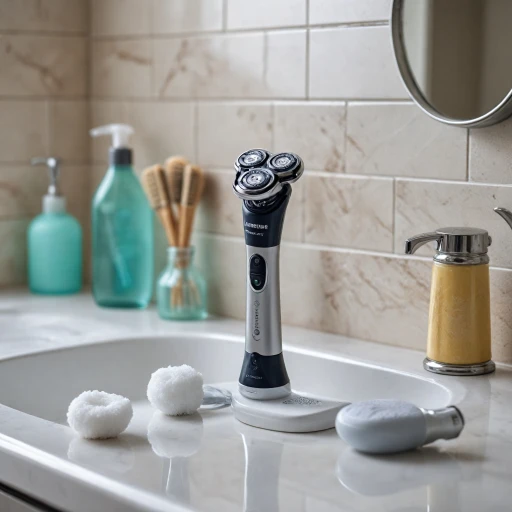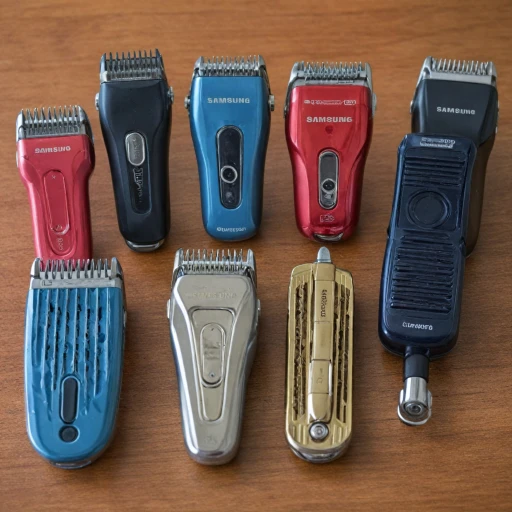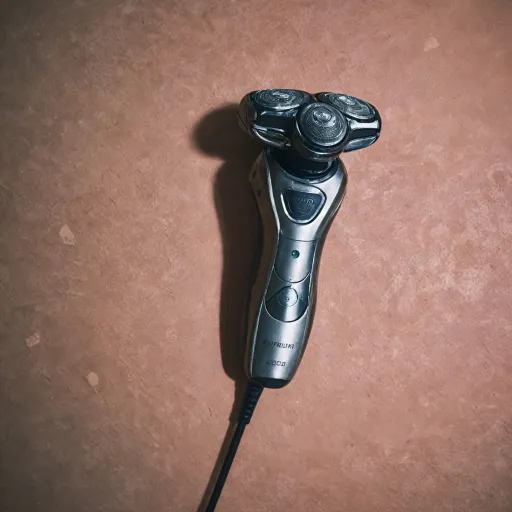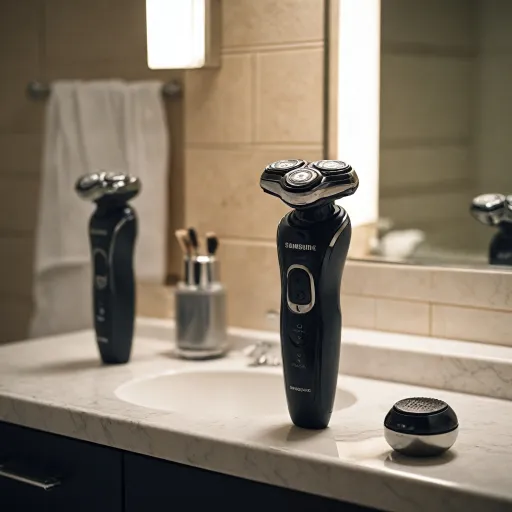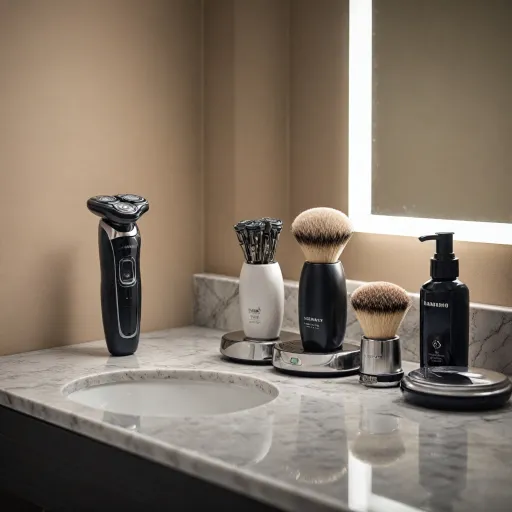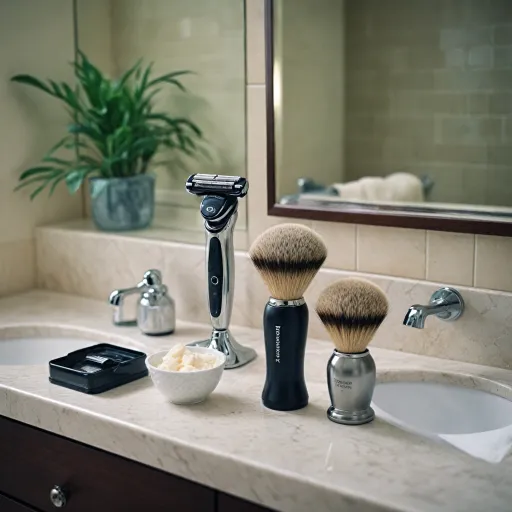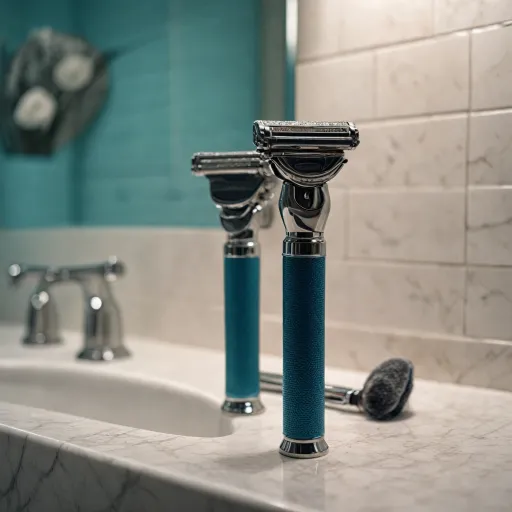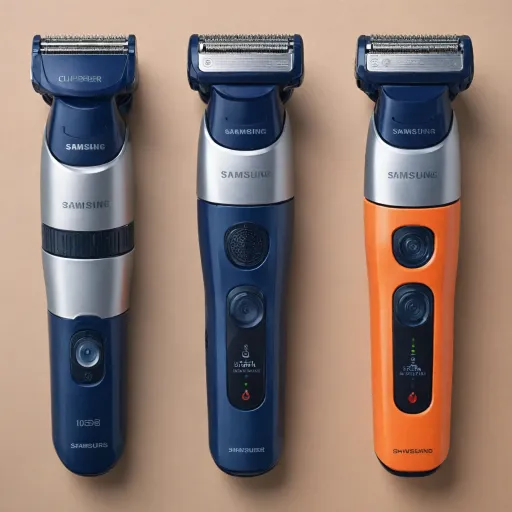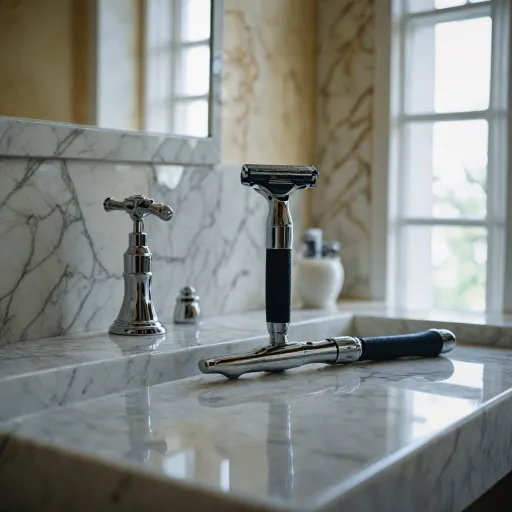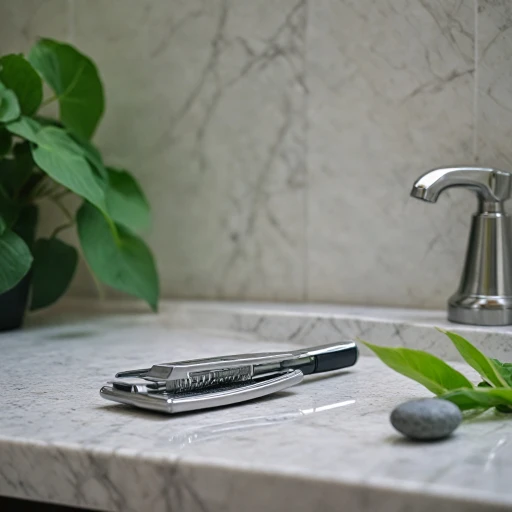
Understanding Your Electric Shaver
Choosing the Right Type of Electric Shaver
The world of electric shaving offers a variety of options to cater to different skin types and personal preferences. Before you can fully embrace electric shaving, it's important to understand the different types of electric shavers available and which one best suits your needs.
The two main types of electric shavers are foil and rotary shavers. Each comes with its own pros and cons:
- Foil Shavers: These are designed with a thin layer of foil that captures hair before cutting it close to the skin. They are ideal for those with sensitive skin and for achieving a precise, close shave. However, foil shavers may require more passes over the same area, leading to potential irritation.
- Rotary Shavers: Featuring three or more rotating heads, rotary shavers are designed to easily navigate the contours of your face. They are particularly effective for shaving thicker hair and hard-to-reach areas. While they offer a comfortable shaving experience, they may not provide as close a shave as foil shavers.
When choosing between these two options, consider your skin type and the texture of your facial hair. Understanding these distinctions will help you achieve the best results, whether you prefer a wet shave or a dry shave.
Exploring Shaving Modes
Electric shavers also offer flexibility with wet and dry modes. Many modern models are designed for both wet shaving, using water and shaving cream, and dry shaving, which doesn't require any additional products. Wet shaving can provide extra protection against irritation and be particularly soothing for the skin, thanks to the use of shaving cream or gel foam. Opt for a wet dry electric shaver to enjoy the convenience of both methods.
By combining the right type of shaver with your preferred shaving method, you can greatly enhance your shaving experience, ensuring both convenience and comfort.
For more details and an in-depth exploration of the benefits of various razor types, you can read about the benefits of the Gillette Skinguard razor.
Preparing Your Skin for Shaving
Hydration and Exfoliation: The Pre-Shave Ritual
Preparing your skin for an electric shave is crucial in minimizing irritation and achieving a close shave. Let's dive into steps that can transform your routine and make your electric shaving experience more comfortable and effective.Shaving Strategy: Dry vs. Wet
Using an electric shaver offers the flexibility of both dry and wet shaving. For those who prefer a quick shave, dry shaving can be efficient and convenient. However, if you seek a more indulgent experience, a wet shave with shaving cream or gel foam can be soothing. Electric shavers designed for wet dry use allow you to switch easily between methods, according to your personal preference and the available time.Best Time for Shaving Your Skin
Timing plays a vital role in your shaving routine. Shaving immediately after showering can be beneficial because the hot water softens the hair and opens up the pores, making the shave smoother. Whether you’re using a rotary or foil shaver, pay attention to the cues your body gives.Foil and Rotary: Knowing Your Device
Choosing between a foil shaver and a rotary shaver comes down to personal preference and specific skin types. Foil shavers are generally regarded as being less likely to cause irritation due to their linear shaving action, while rotary shavers are lauded for effectively navigating the unique contours of the face. Understanding these nuances can lead to an improved shaving experience.The Role of Pre-Shave Products
To enhance the comfort of your shave, consider incorporating pre shave products, which can act as a vital buffer. These products help lift hair and create a protective layer over your skin. Opt for products with ingredients that suit your skin type and address any specific concerns, such as dryness or sensitivity. Discover some expert tips and product recommendations by exploring the benefits of the Gillette SkinGuard razor. This resource offers insight into optimizing your shaving routine. Remember, by understanding your electric shaver and preparing your skin properly, you ensure a smoother, more satisfying shave. Keep these tips in mind each time you reach for your electric razor, and you'll be on your way to mastering the art of electric shaving.Techniques for Effective Shaving
Mastering Effective Techniques for Optimal Results
A successful electric shaving routine hinges on mastering effective techniques. It's essential to consider how you use your electric shaver—whether a rotary or foil shaver—to get the best out of each session. Avoiding irritation and achieving a close shave requires attention to detail and a little practice.
Understanding Rotary vs. Foil Shaving Heads
The type of electric shaver you use will influence your technique. Rotary shavers, with their circular blades, excel in adapting to the contours of your face, making them apt for those with flexible shaving needs. Contrarily, foil shavers, with straight-bladed shaver heads, are excellent for those who prefer a more consistent path during shaving. Understanding the pros and cons of each will help tailor your approach to achieve a smooth shave.
Mastering the Art of Wet and Dry Shaving
Both wet and dry shaving have their advantages. If you prefer a wet shave, using water, shaving cream, or gel can significantly reduce razor drag and skin irritation. Wet shaving is especially suitable for sensitive skin and can make hair easier to cut. On the other hand, dry shaving is less messy and saves time, ideal for those in a hurry. Choose based on your skin’s response and your schedule.
Precision for a Close Shave
A close shave demands a combination of proper technique and the right strokes. Hold the razor perpendicular to your face and use gentle, circular motions with rotary shavers, or straight strokes with foil shavers. Patience is key; rushing could lead to missed spots or skin irritation. Always stretch skin taut for a closer contact and follow with the natural grain of your hair where possible, and adjust accordingly for areas with varying hair direction.
Mindful Timing and Adjustments
The time at which you choose to shave can impact the effectiveness of your shave. Shaving electric in the morning might lead to more skin swell, affecting how close you can achieve. For some, shaving later in the day could help in accessing flatter surfaces as the skin becomes less swollen. Furthermore, consider seasonal adjustments; skin might react differently under varied climate conditions, necessitating tweaks in your routine.
Integrating these nuances into your routine can make a noticeable difference in your shaving experience. Take the time to explore and refine your shaving method to find what truly works for you.
Maintaining Your Electric Shaver
Regular Cleaning for Optimal Performance
Maintaining your electric shaver is crucial for ensuring a close shave every time. Whether you use a rotary or foil shaver, regular cleaning will help prevent hair and shaving cream buildup, which can dull the blades and cause skin irritation. After each use, remove the shaving head and rinse it under hot water to eliminate any residue. For a more thorough clean, consider using a cleaning brush to reach those tricky spots.
Blade Replacement and Lubrication
Over time, the blades of your electric razor will wear out, impacting the effectiveness of your shave. Check the manufacturer's guidelines for the recommended replacement schedule. Typically, foil shavers need new blades every 12 to 18 months, while rotary shavers may require less frequent changes. Additionally, applying a drop of oil to the blades can reduce friction and extend their lifespan, ensuring a smooth shave.
Battery Care for Longevity
To get the best out of your electric shaver, pay attention to the battery. Most modern shavers come with rechargeable batteries, and it's essential to follow the charging instructions to avoid overcharging. Allow the battery to fully discharge occasionally before recharging to maintain its capacity. This practice will ensure your shaver is always ready for a quick dry shave or a more luxurious wet shave with gel foam.
Storage and Handling Tips
Proper storage is another key aspect of maintaining your electric shaver. Keep it in a dry place to prevent moisture damage, especially if you prefer wet shaving. If your shaver comes with a protective cap or case, use it to shield the shaving head from dust and accidental damage. Handling your shaver with care will prolong its life and enhance your shaving experience.
Troubleshooting Common Issues
Identifying Frequent Challenges
Electric shaving brings convenience, but like any technology, it's not free from issues. Understanding the nuances of your shaver will help address common hiccups efficiently.- Performance Drop: If you notice a decreased performance, the culprit might be dull blades. Electric shavers, whether rotary or foil, require regular replacement of blades and foils to maintain their effectiveness. Check your manufacturer's guidelines for replacement frequency.
- Skin Irritations: Skin irritations can arise from a blunt blade or improper technique. Consider using a pre-shave lotion or gel foam for a smoother shave. Also, ensure your shaver is adequately lubricated to prevent friction against the skin.
- Charging Problems: Often, electric shavers face power-related issues. Make sure that your device is compatible with the local voltage and avoid overcharging, which can degrade battery life over time.
Choosing the Right Environment
The choice between wet and dry shaving can influence the experience with your electric razor. Wet shaving involves the use of water and shaving cream or gel, often resulting in less irritation for sensitive skin. Conversely, dry shaving is ideal for quick touch-ups and when water is scarce.- Wet Shave Pros and Cons: This method offers a close shave that's gentle on the skin, reducing redness and irritation. However, it takes additional time due to the need for preparation and clean-up.
- Dry Shave Pros and Cons: Quick and convenient, dry shaving is best for on-the-go grooming. Be mindful though, as it might not offer as close a shave as the wet method does.
Maintaining Consistency in Results
Adopt best practices for consistent performance. Clean your shaver regularly to remove hair and cream buildup, which can compromise its functionality. A clean shaving head ensures optimal contact with the skin, allowing for a more efficient shaving electric mechanism.- Cleaning Routine: For wet dry models, rinse under hot water after each use. For others, use the cleaning brush provided.
Enhancing Your Shaving Experience
Finding the Perfect Routine for a Better Shaving Experience
Maximizing the potential of your electric shaver goes beyond just the mechanics—it's about tailoring an experience that suits your unique needs and preferences. Here are some strategies to elevate your daily shave:- Determine Your Ideal Shaving Method: Whether you prefer wet shaving with a cream or a dry shave using a foil or rotary electric shaver, striking the right balance is key. Consider the pros and cons of each technique based on how your skin reacts and the type of hair you have.
- Incorporate Pre-Shave Preparations: Unlock enhanced comfort by applying a pre-shave mist or lotion. These products can soften the hair and create a smoother glide, reducing irritation associated with shaving electric.
- Utilize Tools Wisely: For those using wet dry options, integrating hot water into your routine can open pores and soften facial hair, leading to a closer shave. Meanwhile, using the right gels or foams can further improve results.
- Regular Upkeep: Your electric shaver needs regular care. Be it cleaning or ensuring the shaver head is in top condition, these steps are essential for both foil shavers and rotary shavers.
- Personalize Techniques: As discussed earlier, adapting your approach—perhaps using slow circular motions with rotary shavers or straight strokes with foil shavers—can prove beneficial.
- Manage Irritation: If skin irritation is a recurring issue, consider exploring different electric razors or adjusting your shaving cream. Sometimes, a shift in products can make a significant difference.

